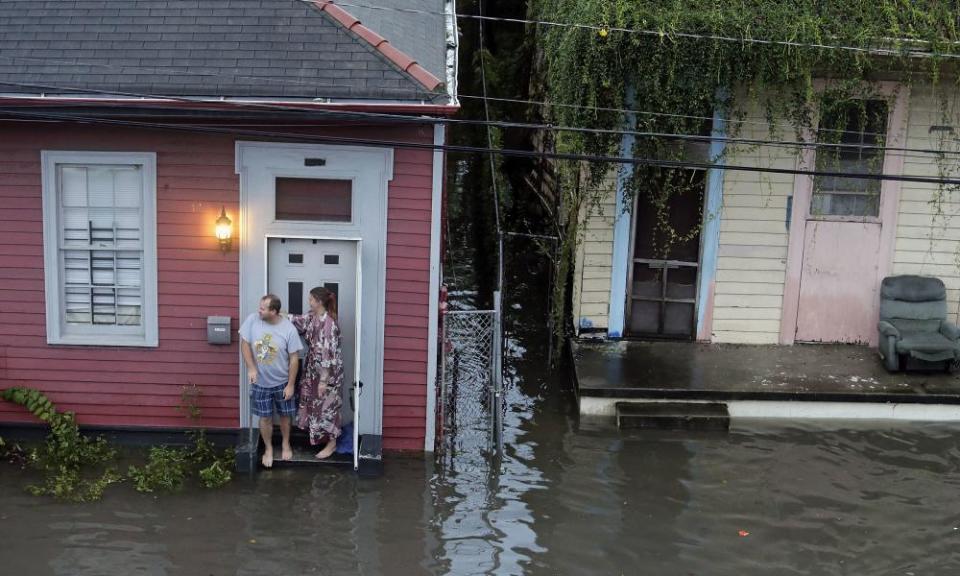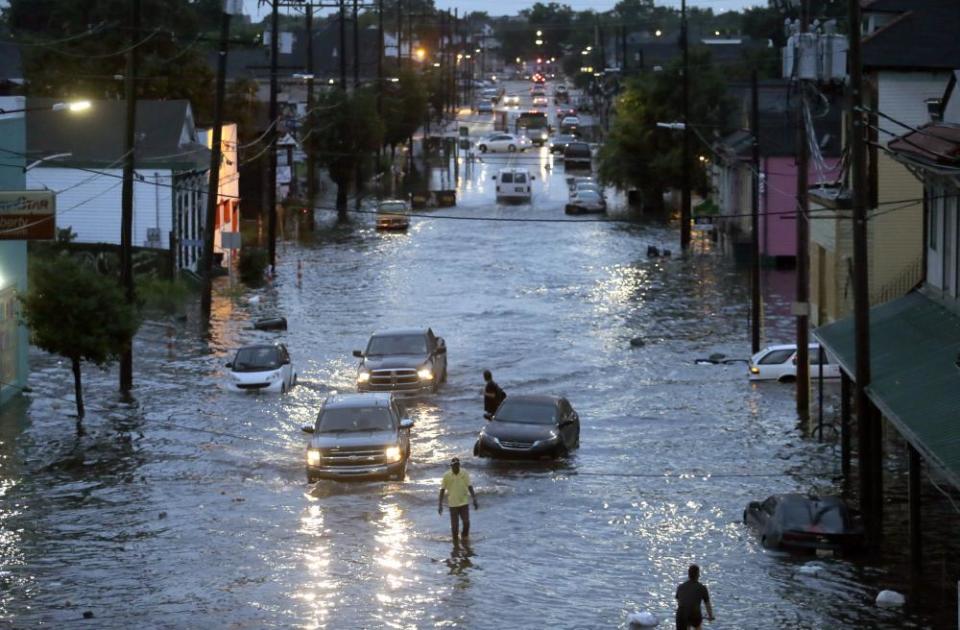New Orleans under water: 12 years after Katrina, officials can't get it right

It is true: New Orleans lives and dies by its water. We eat from the Gulf, lake and wetlands and we breathe deeply of a sweltering, airborne humidity. We get our drinking water from the muddy Mississippi river, which carries the effluvia of half the country. Thousands upon thousands of rainy years have amplified the continuing decay in wetlands surrounding the city, creating vast pockets of valuable petroleum and natural gas which generate a major portion of our economy. The same rainfall and river provide continual growth in one of the lushest plant environments in America.
But we occasionally have our homes ruined, and we occasionally drown, in water.
In the last big lesson, involving the loss of 134,000 homes and 1,500 lives in New Orleans, a hurricane overwhelmed the manmade walls meant to keep the water at bay. Since then, hundreds of miles of new and reinforced levees have been built, over the last dozen years, to make sure that a ruinous intrusion does not happen again. The army corps of engineers built three huge new multimillion-dollar pumps on the Lakefront, so that when the engineers close the floodgates to keep the lake waters out, the pumps can be activated to keep excessive water from overwhelming the system.
Now all the city needs to do is be able to remove water that falls from the sky throughout every single year. And in 2017, that rain has fallen almost every day since 1 April.
The water is indeed rising down here. A lesser but integral part of the problem is loss of trees and foliage that absorb water before it goes into the drainage system. The city had an enormous saltwater intrusion during Katrina. Many plants and trees, like magnolias, that were exposed to the long-term saltwater were killed outright.
In 2012, a US Forest Service study of 20 major American cities reported:
The greatest percentage of annual loss in tree cover occurred in New Orleans, Houston and Albuquerque. Researchers expected to find a dramatic loss of trees in New Orleans and said that it is most likely due to the devastation of Hurricane Katrina in 2005.
In fact, almost 10% of the city’s trees died in the four years after Katrina.
Even without the trees, we supposedly have manmade protection. But last week, in the wake of the previous two weekends’ floods, the recently retired sewerage and water board executive director (S&WB) Cedric Grant again repeated the oft-cited fact that “the pumps can only drain 1in of rain the first hour that they’re turned on and half an inch every subsequent hour”.

By most reports, the Faubourg Marigny neighborhood where I live received almost 10in of rain in three hours on Saturday 5 August. Marigny Street itself was completely full and overflowing. Our neighbors moved their cars from the street to park up on higher sidewalks. The water quickly rose over the curbs, and into my own yard and drive. I was pulling my shallow draft Mudbug pirogue out of storage when the water finally stopped rising. My house is on a high lot four blocks from the river, and the main structure is built up on piers, so in the end, the water did not get to the floorboards.
The meteorological bottom line is that even if the entire pumping system had been operating at maximum capacity, as Grant and the S&WB general superintendent, Joseph Becker, had earlier claimed, the rain would still have overwhelmed the system.
However, when pressed by an angry public and a media swarm that sensed something amiss, Becker first admitted eight of the city’s pumps had been out of service before a drop of rain fell on Saturday.
Subsequent investigation found that of 67 pumps on the East Bank of the city, just 58 were “functional in some form”. But the board’s dedicated power system also failed, so that only 38 pumps could be used at one time. Half capacity. And according to the board’s own logs, one crucial pumping station, No 12 on the Lakefront, had not even been manned until four hours after the 3.30pm storm, and not actually turned on until 8.49pm. Which is exactly when residents say they first saw waters starting to recede.
So, we are in the midst of this monster rainstorm season, with hurricanes coming up in the Gulf. What do the ever-alert Nola civil service employees do in this circumstance? Well, of course, they take half the pumps we do have offline for maintenance. Most of these pumps work on antiquated 25-cycle electricity, instead of the prevalent 60-cycle system, and need power produced by the city’s turbine system to function.
Mayor Mitch Landrieu, who also serves as S&WB president, essentially fired all the top administrative personnel at the board on 8 August.
But his friend Cedric Grant was allowed to resign. For allowing the city to flood twice in two weeks, Grant will receive free health benefits and $175,400 a year in pension for the rest of his life.
And you can bet Mr Grant’s car did not get flooded or stolen.
On 13 August, Landrieu announced that the rainwater removal system was nowhere near up to speed, and that the city was “vulnerable” for the next two weeks, as the height of hurricane season approaches. He also reported that only two of the S&WB’s five electrical turbines, which power the pumps, were operational, and that a total of 26 mobile generators had been moved into place or were being transported into the city to provide additional electricity for the pumping system.
The immediate prospect is grim, even without a hurricane. Forecasts for the next week call for a 40-60% chance of “downpours” every day.
Twelve years after Katrina, things have not changed one iota at the New Orleans sewerage and water board. Still using tap, glue, and spit.
• This article was amended on 15 August 2017. A previous version of the headline and article incorrectly stated Hurricane Katrina had occurred 10 years ago.

 Yahoo News
Yahoo News 